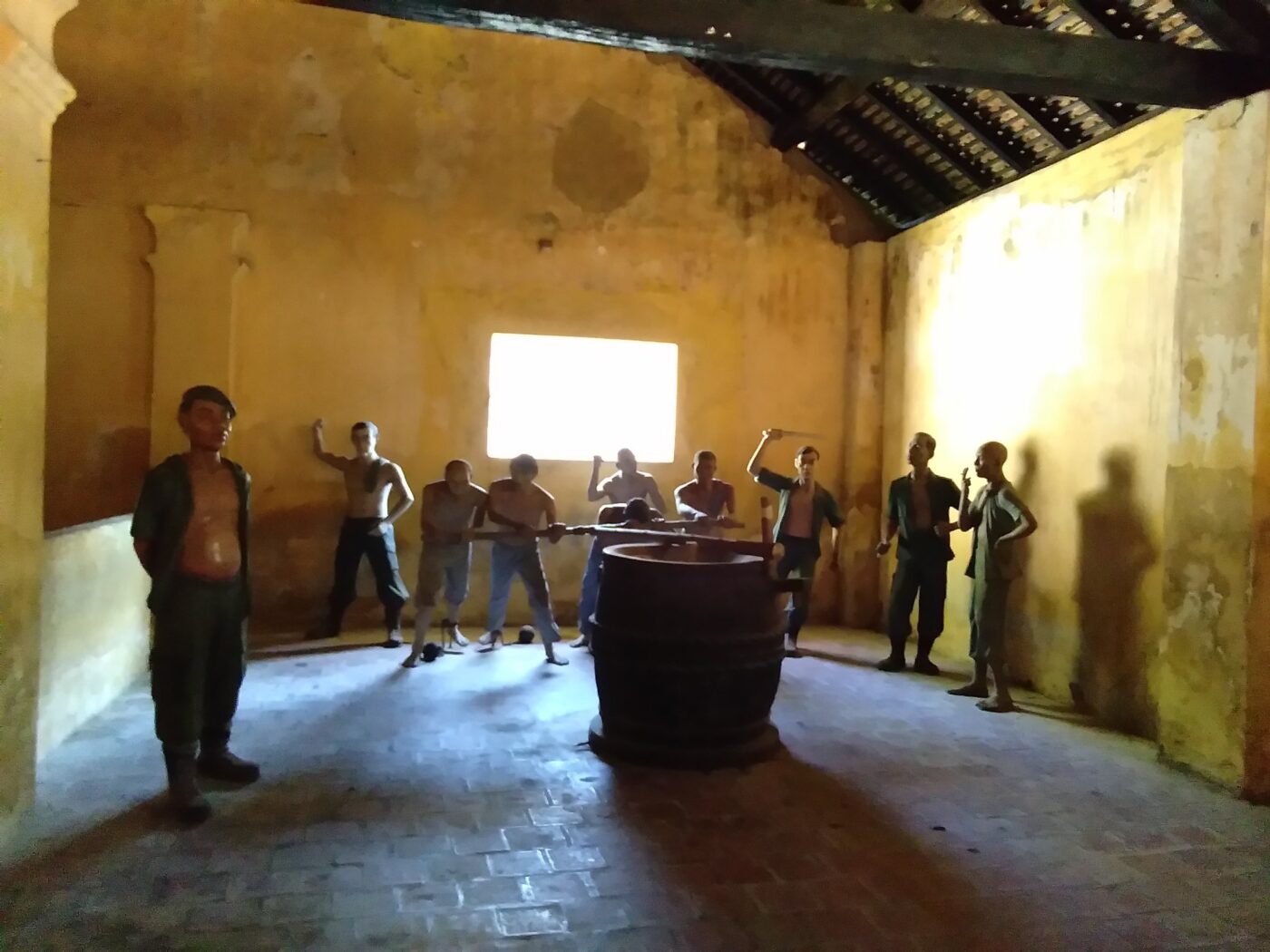The Rice-Milling Vault is located inside Phú Hải Prison Camp—the oldest prison on Côn Đảo. It was established by the French in 1862 and later reinforced with solid construction between 1889 and 1896. Covering more than 12,000 m², the camp consisted of:
- 10 collective prison cells
- 1 execution room
- 20 solitary confinement stone cells
- 2 rice-milling vaults that also served as punishment chambers
- 1 forced-labor rock-breaking area
A Place the Wardens Called “The Punishment Zone”
The Côn Đảo prison wardens referred to the Rice-Milling Vault as the “Punishment Zone” (Trừng giới). Inside this vault, prisoners were not only forced into brutal hard labor but also subjected to relentless physical torture.
The rice mill itself was built from a large wine barrel adapted into a heavy grinding cylinder. Prisoners had to push this mill endlessly, and anyone sent here would, after just a few months, be reduced to exhaustion—eyes inflamed, lungs damaged, bodies broken. Many contracted tuberculosis and never recovered.
Because of its extreme cruelty, the Rice-Milling Vault became known as:
“A prison within a prison, hell within hell.”
The Brutality of ‘Cặp Rằng’ – Prisoners Who Tortured Prisoners
Adding to the horror was the tyranny of the “cặp rằng”—groups of violent criminals empowered by wardens to oversee and terrorize fellow inmates. They served as instruments of oppression, enforcing the rule of “prisoners disciplining prisoners” through beatings and intimidation.
The Final and Most Terrifying Level of Punishment
Forced labor inside the rice-milling vault was the last and harshest measure listed in the Côn Đảo prison regulations.
The vault was pitch black, containing five grinding mills made from old iron barrels packed with clay. Each mill required six prisoners to rotate it, and each man had to work with a heavy iron weight shackled to his leg.
Prisoners were paired and shackled together. From 6:00 a.m. to 5:00 p.m., they worked non-stop under the lashes of the cặp rằng. Any slowdown meant a whip to the bare back.
The Rock-Breaking Yard – Where Patriot Phan Chu Trinh Wrote His Famous Poem
Nearby was the notorious rock-breaking yard, where patriot Phan Chu Trinh composed the poem “Breaking Rocks in Côn Lôn”, with the iconic opening:
“To be a man standing on Côn Lôn’s land,
Shaking the mountains with mighty hands…”
This area symbolized the unbreakable spirit of Vietnamese revolutionaries even under brutal oppression.
The Rice-Milling Vault and the Heroic Legacy of Tôn Đức Thắng
If the rock-breaking yard represents defiant heroism, then the Rice-Milling Vault is forever tied to the steadfast revolutionary Tôn Đức Thắng.
Knowing he was a skilled mechanic, the French assigned him to the Fishing Station (Sở Lưới) to repair motorboats. In 1945, the motorboat Giải Phóng—repaired by President Tôn Đức Thắng himself—was later used to bring members of the revolutionary leadership safely back to the mainland.
Most prisoners forced to work inside the rice-milling vault died from respiratory diseases or from savage beatings for failing to meet impossible quotas. The vault was sealed, allowing no ventilation and no escape from the toxic dust and suffocating darkness.








